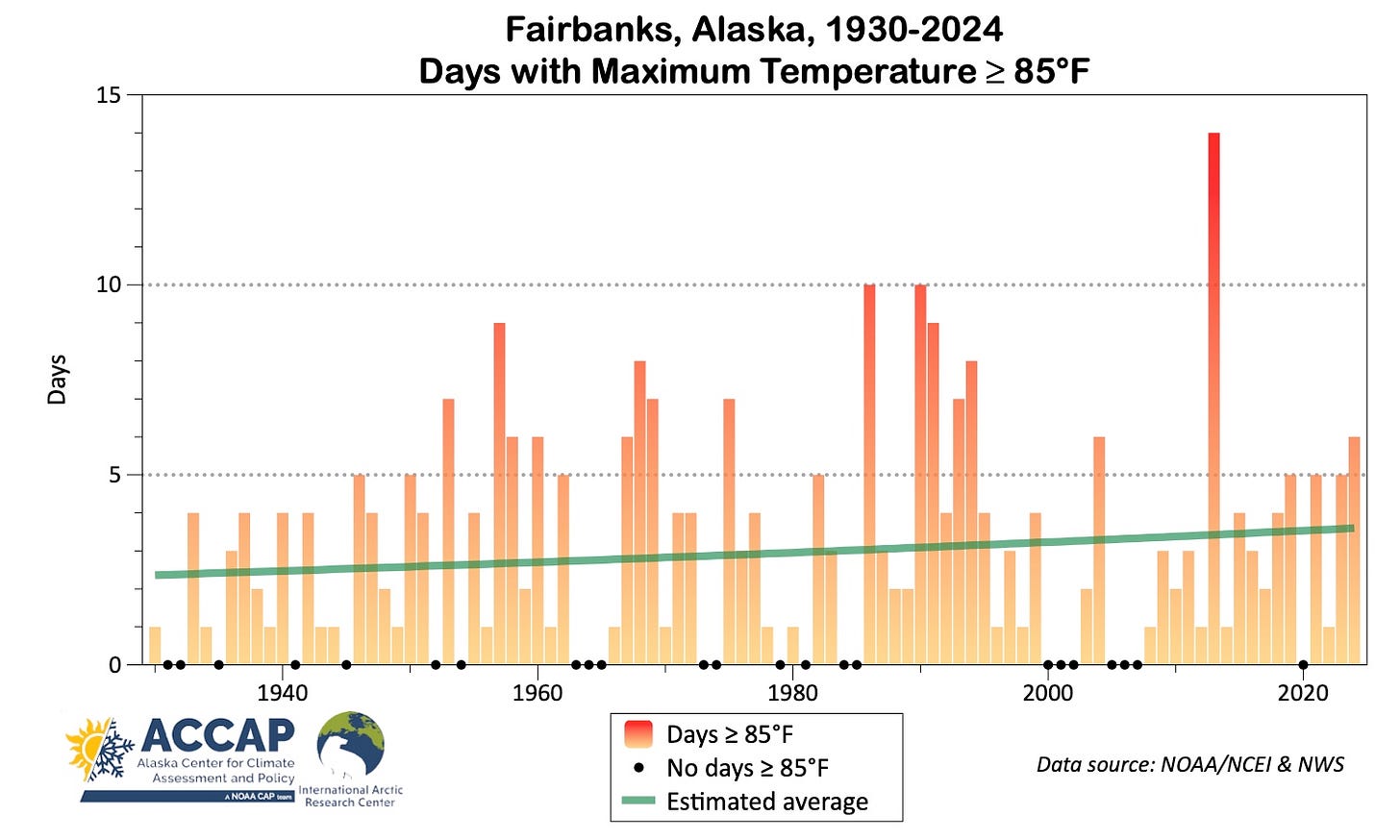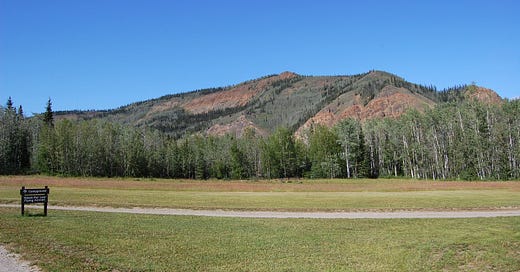On June 12, 2025 the National Weather Service Fairbanks issued the first ever Heat Advisory in Alaska. This resulted in several media articles and some churn on social media. In this post I want to add some context to this.
The First Heat Advisory
The inaugural heat advisory from the Fairbanks Forecast Office is reproduced below. First and foremost, this is the first heat advisory in Alaska because of an internal National Weather Service administrative change. Until June 2, 2025 the NWS in Alaska did not issue heat advisories at all, regardless of temperature. For many decades prior, special weather statements were issued to highlight forecasted heat.
The specifications for the new products from the Fairbanks and Juneau offices (Anchorage was not included) are shown below and the full notification from NWS Headquarters is here. This specifics the criteria for heat advisories. NWS Fairbanks has two different criteria, one for the Interior and a lower threshold for North Slope and west coast.
The Climate Context
Temperatures of 85F or higher occur somewhere in Interior Alaska nearly every summer (the last time that no climate station reported 85F or higher was evidently the summer of 1984). Table 1 shows for selected sites the average number of days with a high of 85F or above and the percentage of summers when no days were so warm over the past 30 years. This highlights the fact that the new heat advisory is not issued solely for (near) record summer temperatures.

Of course, temperatures this high are very elevation dependent, e.g. Denali National Park Headquarters, at 2100 feet MSL, in Table 1. In the Fairbanks area, the Keystone Ridge cooperative climate station, at an elevation of 1600 feet MSL, had a total of ten days with a high temperature of 85F or higher between 1996 and 2024. Fairbanks Airport, 14 miles southeast of Keystone Ridge at 450 feet MSL, had 77 days such days in the same 29 years.
Figure 1 plots the number of days per year with a temperature of 85F or higher for Fairbanks since 1930. There is a hint of a slight increase in the average number of days per year at 85F or above, but the trend is not (yet at least) statistically significant, i.e. we don’t have strong evidence that there has been anything more than random variation in the number of hot days per year.

So why bother?
NOAA/NWS in recent years has made excessive heat a priority as the importance of high temperatures in human health has been increasingly recognized. Alaska was not included in the initial push, so the new heat advisories simply bring two of the three Alaska Forecast Offices into alignment with what the rest of NWS is already doing.
The importance of heat on human health in Alaska has also been recently documented, e.g. this ground-breaking paper led by Dr. Micah Hahn at University of Alaska Anchorage. I wrote a post (here) about the discomfort produced by heat and smoke in Interior Alaska: why it’s a bit different than at lower latitudes and how it’s changing. In a nutshell, there are four main reasons why heat but with lower temperatures than are common at mid-latitudes matters in Alaska.
People are simply acclimated to lower temperatures.
The sun is up a long time every day in the early and mid-summer, reducing the time available for cooling. For example, at Fairbanks, the sun is above the horizon more than 18 hours a day from early May to early August.
The sun angle at high latitudes is lower than farther south. A lower sun angle means that more of any vertical surface (including, say, your body) is exposed to direct sun during the midday hours and shines into windows more effectively.
With long cold winters, buildings in Alaska are designed to hold heat, and most businesses and residences do not have whole building cooling systems. In part related to heat-retaining objectives, window designs usually do not allow the use of “box” air conditioners. So the interiors of buildings warm very quickly with limited options for lowering temperatures during the long summer days.
For additional details see Brian Brettschneider’s Forbes article “Why Does It Feel So Warm In Alaska On A Sunny Day?”, here.
In summary, heat advisories make sense in Alaska but the fact they were not issued prior to this summer is not a reflection of increased frequency or higher extremes, but rather the end result of better understanding of why heat matters in Alaska and how to communicate the associated risks more effectively.





